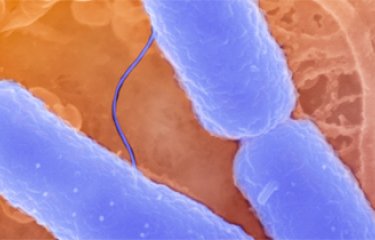Researchers at the Pasteur Institute and the University of Zaragoza have developed a novel strategy to produce a new tuberculosis vaccine candidate. In an article published in Vaccine, they demonstrate that inactivation of a single gene in the tuberculosis bacillus gives rise to a strain that is more attenuated than BCG and which provides better protection against the disease. This work paves the way for the development of a new generation of vaccines that could well replace BCG.
Press release
Paris, march 23, 2006
TBCG is currently the only vaccine used to provide protection against tuberculosis, a disease that still kills around 2 million people a year worldwide. This attenuated live vaccine, developed early in the 20th century at the Pasteur Institute by Albert Calmette and Camille Guérin, protects young children against serious forms of tuberculosis. The World Health Organization recommends its use in countries with a high incidence of tuberculosis cases and millions of doses of this vaccine are administered globally each year.
However, BCG is not fully effective because although it is extremely useful in preventing serious forms of the disease in young children (around 90% efficacy), it only protects about one in two adults. Development of a new vaccine with improved efficacy as compared to BCG to eradicate pulmonary forms of tuberculosis in adults, the most contagious form, is therefore a major public health issue.
After 5 years of collaboration, six European and Latin American laboratories, coordinated by Brigitte Gicquel at the Pasteur Institute in Paris and Carlos Martin of the University of Zaragoza, have succeeded in developing a new vaccine candidate for tuberculosis. This work falls within the scope of an integrated European project called TB-VAC undertaken by the European Commission (www.tb-vac.org).
In preliminary studies, researchers showed that the introduction of a single mutation in a gene called phoP, which controls the expression of several virulence genes, led to inactivation of bacillus virulence (1, 2). They then investigated whether live bacteria modified in this way could stimulate protection against tuberculosis. The new strain produced has been tested in pre-clinical trials and the results, highly promising, show that this vaccine confers greater protection against tuberculosis and has fewer side effects than BCG.
This work opens the way towards the development of a new generation of attenuated live vaccines, cheap and as easy to produce as BCG but probably more effective in preventing the worldwide plague that is tuberculosis.
Sources
« The live Mycobacterium tuberculosis phoP mutant strain is more attenuated than BCG and confers protective immunity against tuberculosis in mice and guinea pigs» Vaccine Mars 2006.
Carlos Martín (1), Ann Williams (2), Rogelio Hernandez-Pando (3), Pere J. Cardona (4), Eamonn Gormley (5), Yann Bordat (6), Carlos Y. Soto (1), Simon O. Clark (2), Graham J. Hatch (2), Diana Aguilar (3), Vicente Ausina (4) et Brigitte Gicquel (6)
1. Grupo de Genética de Micobacterias, Departamento de Microbiología, Facultad de Medicina, Universidad de Zaragoza, Spain
2. Health Protection Agency, Porton Down, Salisbury SP4 OJG, UK
3. Experimental Pathology Section, Department of Pathology, National Institute of Medical Sciences and Nutrition “Salvador Zubiràn”, Mexico City, Mexico
4. Unitat de Tuberculosi Experimental, Servicio de Microbiología, Fundació Institut per al Investigació en Ciències de la Salut “Germans Trias i Pujol”, Universitat Autònoma de Barcelona, Spain
5. School of Agriculture, Food Science & Veterinary Medicine, University College Dublin, Ireland
6. Unité Génetique Mycobactérienne, Institut Pasteur Paris, France
(1) An essential role for phoP in Mycobacterium tuberculosis virulence. Mol. Microbiol juillet 2001
Perez E, Samper S, Bordas Y, Guilhot C, Gicquel B, Martín C.
(2) The Virulence-associated Two component PhoP-PhoR System Controls the Biosynthesis of Polyketide-derived Lipids in Mycobacteriumtuberculosis. Journal of Biological Chemistry, Janvier 2006
J. G. Asensio, C. Maia, N. L.Ferrer, N. Barilone, F. Laval, C. Y. Soto, N. Winter, M. Daffe, B. Gicquel, C. Martín et M. Jackson.
Contact press
Institut Pasteur Press Office
Nadine Peyrolo ou Bruno Baron
+33 (0)1 44 38 91 30- bbaron@pasteur.fr



